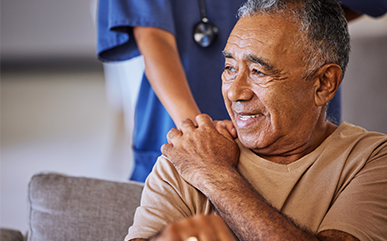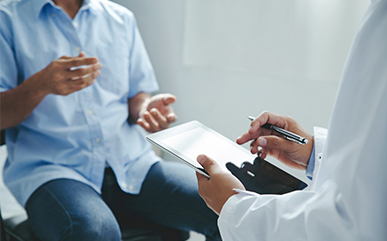Manufacturing Considerations for Cell and Gene Therapy Products to Mitigate the Risk of COVID-19 Disease Transmission
Cell and gene therapies embrace a wide variety of products including: 1) autologous and allogeneic off-the-shelf cellular products; 2) gene modified autologous and allogeneic off-the-shelf cellular products; 3) gene therapy products; 4) tissue engineered products that can include scaffolds or cellular components isolated from HCT/Ps; and 5) other products, such as acellular products manufactured from Human Cells, Tissues, and Cellular and Tissue-Based Products (HCT/Ps).
Background: SARS-CoV-2 (also referred to as HCov-19) is the causative agent for the novel pneumonia known as COVID-19
SARS-CoV-2 belongs to a broad family of viruses that are composed of enveloped capsid containing positive sense single-stranded RNA. Transmission occurs primarily through spread of respiratory droplets and indirect contact with contaminated surfaces, on which viral particles can remain for days, depending on the composition of the surface -- e.g., steel, plastic, copper, or cardboard (1). There is also concern that viral RNA is also detectable in stool samples from infected persons. As reports of COVID-19 have been linked to the Hunan Market in Wuhan China, it has been presumed that the source of this virus is animals. Although it is difficult to know when the initial transmission from animals to humans occurred, it is important to note that earliest report of this disease is linked to the Wuhan market, which had been visited by the first patient hospitalized with what was later diagnosed as COVID-19 on 12 December of 2019 (2). The exact mechanisms of transmission of COVID-19 are very complex, but what is known is that it appears to be transmitted much more easily than flu virus, and infected people who are asymptomatic can still transmit the virus to others. In the most vulnerable population, elderly and immune compromised patients with pre-existing medical conditions, the viral illness can progress to acute respiratory failure, which has a mortality rate as high as 14% currently in the literature. There are no vaccines or approved therapies that are effective in preventing or treating COVID-19. Like other large enveloped viruses, SARS-CoV-2 is sensitive to detergents and alcohol, which can be used as disinfectants.
During manufacture of cell and gene therapy products, viral contamination can come from a number of different sources, which include: 1) contaminated HCT/Ps; 2) contaminated supply biological raw materials; 3) manufacturing environment, including infected personnel/operators; and 4) infected clinical site personnel who prepare the final drug product and administer it to patients.
My colleague Kurt Brorson authored a series of blogs, which further define the risk of COVID-19 transmission through biotech products that are commonly amenable to closed-system manufacturing, filtration and viral reduction steps. Kurt also discusses the use of cell lines (CHO, murine myeloma) and culture conditions that are probably less likely to be susceptible to COVID-19 contamination. Although this hasn’t been tested, it is based on the timing of MCB and WCB development and production prior to the presumed date of transmission (December of 2019), along with a likely inherently lower permissiveness in protein-free media bioreactor propagation of this particular virus (4,6). This product class can also be subjected to virus retentive filtration during drug substance purification, a key safety step with respect to viruses, including the Coronavirus family of large enveloped viruses.
Unlike biotech products, it is virtually impossible in some cases to subject cell and gene therapy drug products to viral inactivation steps, as the process of inactivation has been shown to adversely impact product quality. Similarly, viral filters are effective in filtering out viral particles, but can also remove the actual product; therefore, filtration is generally not feasible in this situation. For these reasons, it’s critical to place strong emphasis on controlling the spread of communicable diseases from cell therapy products, including allogeneic CAR-T products, through establishing Donor Eligibility (DE) for Human cells, Tissues, and Cellular and Tissue-Based Products (HCT/Ps) that are collected from allogeneic donors. Currently, DE requirements, as per 21 CFR 1271 Subpart C, do not include testing of donors for Coronavirus, but FDA has recently been very proactive in changing the requirements as the public is confronted with new infectious agents. For example, in response to the recent outbreak of Zika Virus, the agency issued several guidance documents in which Zika Virus was added to the list of Relevant Communicable Disease Agents and Diseases (RCDAD) for HCT/Ps and blood derived products. Questions as to whether Coronavirus poses a significant risk of disease transmission when products are derived from allogeneic sources or cultured and manipulated in the presence of human-derived components remain to be answered. However, in view of the complexity of these products, the risk of disease transmission for Coronavirus will need to be evaluated using a risk-based case-by-case approach depending on the scientific data.
Table I summarizes factors that could potentially impact the risk of COVID-19 disease transmission, which include:
Supply chain quality: Cell and gene therapy manufacturing can involve a variety of biological materials that are derived from humans and animals. The risk of contamination of the materials sourced from human plasma and blood remain to be clarified, but implementation of voluntary screening and testing of the donor and donor materials for SARS-CoV-2 may be required.
Manufacturing Process (open vs closed systems): Although there is a current trend toward a shift from the use of open manufacturing platforms to more closed systems, a large number of products for early phase studies are still manufactured in less-closed and/or more open platforms – utilizing in all cases a biological safety cabinet for environmental control which are sometimes located in a non CGMP environment. This lack of control introduces an additional risk of product contamination by operators potentially infected with SARS-CoV-2.
Manufacturing Operators: Personnel who are responsible for manufacturing cell and gene therapies, similar to others in this industry, do not typically undergo any thorough infectious disease screening or testing procedures#. Furthermore COVID-19 test kits are either limited or being developed currently.
Manufacturing facility: In the current environment, an increasing number of products are being manufactured in multi-product facilities, which increases the risk associated with cross-contamination. For example, it is possible that the same clean room facility is being used for autologous and allogeneic product manufacturing.
Clinical Site Environment and Operators (Collection, Product manipulation at clinical site): Another aspect of operator control relates to what happens to cell and gene therapy products at the clinical sites, where some of them undergo further manipulation (thaw and wash and testing) prior to administration in largely non CGMP environments.
HCT/P, blood Donor screening and testing: The quality of biological source material is probably the most important aspect of quality control. The agency has published advisory guidance documents suggesting that donors be screened for COVID-19 when these starting biological materials are used for manufacturing of the final drug products (5). However, due to a lack of clear understanding of the disease transmission and lack of validated tests, it is not clear when the agency may formalize their specific recommendations regarding COVID-19.
Producer cells or cell lines: Most cell lines that are used to manufacture viral products (AAV and lentiviral vectors) are derived from human and primate source materials, which could be more permissive to SARS-CoV-2 infection. This, in turn, is expected to increase the risk of disease transmission, provided that these lines are exposed to contaminated materials or infected operators.
Viral clearance: Unlike traditional pharmaceutical products, most cell and gene therapy products cannot undergo viral inactivation steps. This issue does not apply to acellular products, such as exosomes, which are derived from human cell lines, and certain gene therapy products. The inability to undergo viral inactivation steps could contribute to a higher risk of disease transmission
Product filtration: Unlike biotech products, most cell and gene therapy products cannot undergo a 0.2 micron sterile filtration step and/or nanofiltration, Tangential Flow Filtration (TFF) or TFD methods typically used for Biotechnology products.
Batch size: Although the batch size for autologous products is N=1, the batch size of some off-the-shelf products manufactured from HCT/Ps is scaled to potentially treat a large number of patients.
Patient population: The risk of disease transmission should also be viewed in terms of the risk to the intended patient population. Various factors, such as patient age, general health, and immune status, are likely to impact the risk to a given patient populations.
Time for testing: In general, for products which have a long shelf life (e.g., cryopreserved products,) there is sufficient time to conduct testing of the DS/DP in a manner that allows all test results to be available prior to release. However, for fresh products, there is a limited time available between completion of manufacturing and administration to patients, which makes it very difficult to conduct product testing.
Table II provides a summary of risks associated with each type of product, with the highest risk of transmission being associated with off-the shelf allogeneic products that are comprised of either tissue engineering products, cell therapies, or gene modified cellular products. This next highest risk is for tier 2 risk products that include autologous products, followed by products that are closer in nature to biotech products, such as gene therapy (AAV) products or exosomes (defined as Tier 3).
Although it is very difficult to know exactly how this novel virus will impact manufacture of products in the cell and gene therapy space, it is safe to say that a risk-based approach to prevent transmission of SARS-CoV-2 is a prudent approach.
Recommendations:
In view of current uncertainty related to SARS-CoV-2 virus disease transmission, diagnostic and testing implementation of a case-by-case review of the product’s risk profile may be warranted to mitigate risk of disease transmission. This goal could be accomplished by instituting a subset, or all, of the recommendations outlined below:
For all allogeneic off-the-shelf products that belong to the highest risk category, the following is recommended:
- Voluntary testing of the final drug product using sensitive validated tests for SARS-CoV-2
- Voluntary screening of donors for tissue HCTPs recovered after January 1st 2020 (5)*+
- Voluntary testing of human-derived materials manufactured from tissue collected after January 1, 2020
- Voluntary screening and/or testing of all operators who come into contact with the product
- Implement rigorous application of CGMPs including considerations for product segregation, cleaning and environmental controls, line clearance and change over during manufacturing and product manipulation at the clinical site
References:
*The draft guidance published February 14, 2020 states “Based on the limited information available at this time, establishments may wish to consider the following donor history in the 28 days prior to HCT/P recovery for persons who have traveled to areas with COVID-19 outbreaks, as defined by CDC, 2) lived with individuals diagnosed with or suspected of having COVID-19 infection; or been diagnosed with or suspected of having COVID-19 infection”.
+ Donor testing is not recommended at this time since as outlined in regulation donor testing must be performed using FDA licensed, cleared or approved test kit and testing must be conducted by a CLIA certified lab or lab meeting equivalent requirements as determined by the Center for Medicare and Medicaid Services and for the timing of specimen collection for testing, manufacturers must collect the donor specimen for testing at the time of recovery of cells or tissue from the donor or up to 7 days before and after recovery except for leukocyte rich cells whereby manufacturers may collect donor specimens 30 days before recovery (21 CFR 1271 .80).
# “Any person shown at any time (either by medical examination or supervisory observation) to have an apparent illness or open lesions that may adversely affect the safety or quality of drug products shall be excluded from direct contact with components, drug product containers, closures, in-process materials, and drug products until the condition is corrected or determined by competent medical personnel not to jeopardize the safety or quality of drug products. All personnel shall be instructed to report to supervisory personnel any health conditions that may have an adverse effect on drug products” (21 CRF 211.28 (d)).
- https://www.nih.gov/news-events/news-releases/new-coronavirus-stable-hours-surfaces
- https://science.sciencemag.org/content/367/6485/1412.full
- https://regulatory-access.parexel.com/covid-19/virus-filtration-a-key-manufacturing-step-keeping-medicines-safe-including-from-emerging-viruses-like-covid-19-4
- https://regulatory-access.parexel.com/covid-19/regulatory-blog-bioprocessing-and-biologics-risk-from-coronavirus-4
Table I: Summary of risk factors associated with transmission of SAR-Cov2: NA: Not Applicable; *For viral products and acellular products such as exosomes manipulation of products at clinical site is typically less than cellular or gene modified cellular products or tissue engineered products.
| Autologous cell Therapy | Allogeneic cell therapy | Autologous gene modified cells | Allogeneic gene modified cells | Gene Therapy | Tissue Engineering | Tissue Engineering | Acellular product from allogeneic cells (HCTP) | |
| Autologous | Allogeneic cells (HCTP) | |||||||
| HCT/P | NA | Yes | NA | Yes | NA | NA | Yes | Yes |
| Biological Raw Materials | Yes | Yes | Yes | Yes | Yes | Yes | Yes | Yes |
| Producer cell or cell lines | NA | NA | NA | NA | Yes | NA | NA | Yes |
| Manufacturing platform | Yes | Yes | Yes | Yes | Yes | Yes | Yes | Yes |
| Manufacturing operators | Yes | Yes | Yes | Yes | Yes | Yes | Yes | Yes |
| Clinical Site Operators | Yes | Yes | Yes | Yes | Yes* | Yes | Yes | Yes* |
| Lack of viral clearance | Yes | Yes | Yes | Yes | Viral clearance extremely challenging | Yes | Yes | Viral clearance is possible |
| Product filtration | No | No | No | No | Yes | No | No | Yes |
| Batch size | N=1 | large | N=1 | large | large | N=1 | large | large |
| Patient population | Patient age, health and pretreatment | Patient age, health and pretreatment | Patient age, health and pretreatment | Patient age, health and pretreatment | Patient age, health and pretreatment | Patient age, health and pretreatment | Patient age, health and pretreatment | Patient age, health and pretreatment |
Table II: Proposed level of risk to product contamination. Tier 1: Highest Risk, Tier 2: Medium
|
Autologous cell Therapy |
Allogeneic cell therapy |
Autologous gene modified cells |
Allogeneic gene modified cells |
Gene Therapy |
Tissue Engineering Autologous |
Tissue Engineering Allogeneic cells (HCTP) |
Acellular product from allogeneic cells (HCTP) |
|
|
Accumulative Risk |
Tier 2 |
Tier 1 |
Tier 2 |
Tier 1 |
Tier 3 |
Tier 2 |
Tier 1 |
Tier 3 |
Related Insights
Podcast
Enabling Successful Sites, Episode 2: Empowering Sites to be More Inclusive Through Cultural Sensitivity Training
Jun 28, 2024
Blog
ASGCT 2025: Breakthrough Advances in Gene and Cell Therapy
May 29, 2025
Playbook
Mitigating risk, protecting potential: Practical strategies that position cell and gene therapy development for success
Mar 28, 2023
Podcast
The Parexel Podcast | Episode 15: Pandemic preparedness: Investing in the future of infectious disease vaccine development
Feb 8, 2021
Article
Three ways to improve your chances that insurers will pay for a new CGT
Feb 18, 2021
Article
Regulatory, clinical and logistics challenges of ATMPs in clinical research
Apr 22, 2021
Blog
What COVID Taught Us About Focus, Innovation, and Leadership
Sep 24, 2021
Whitepaper
Master Protocols from Design to Delivery
Sep 30, 2021
Blog
Studying multiple versions of a cellular or gene therapy product in an early-phase clinical trial
Nov 19, 2021
Video
Biotech Showcase: Fireside Chat with Jamie Macdonald
Jan 3, 2022
Blog
Chris Learn joins Parexel as Head of the Cell and Gene Center of Excellence
Apr 4, 2022
Video
Cell & Gene Therapies: A Regulatory Update
Jul 22, 2022
Related Insights
Podcast
Enabling Successful Sites, Episode 2: Empowering Sites to be More Inclusive Through Cultural Sensitivity Training
Jun 28, 2024
Blog
ASGCT 2025: Breakthrough Advances in Gene and Cell Therapy
May 29, 2025
Playbook
Mitigating risk, protecting potential: Practical strategies that position cell and gene therapy development for success
Mar 28, 2023
Podcast
The Parexel Podcast | Episode 15: Pandemic preparedness: Investing in the future of infectious disease vaccine development
Feb 8, 2021
Article
Three ways to improve your chances that insurers will pay for a new CGT
Feb 18, 2021
Article
Regulatory, clinical and logistics challenges of ATMPs in clinical research
Apr 22, 2021
Blog
What COVID Taught Us About Focus, Innovation, and Leadership
Sep 24, 2021
Whitepaper
Master Protocols from Design to Delivery
Sep 30, 2021
Blog
Studying multiple versions of a cellular or gene therapy product in an early-phase clinical trial
Nov 19, 2021
Video
Biotech Showcase: Fireside Chat with Jamie Macdonald
Jan 3, 2022
Blog
Chris Learn joins Parexel as Head of the Cell and Gene Center of Excellence
Apr 4, 2022
Video
Cell & Gene Therapies: A Regulatory Update
Jul 22, 2022





